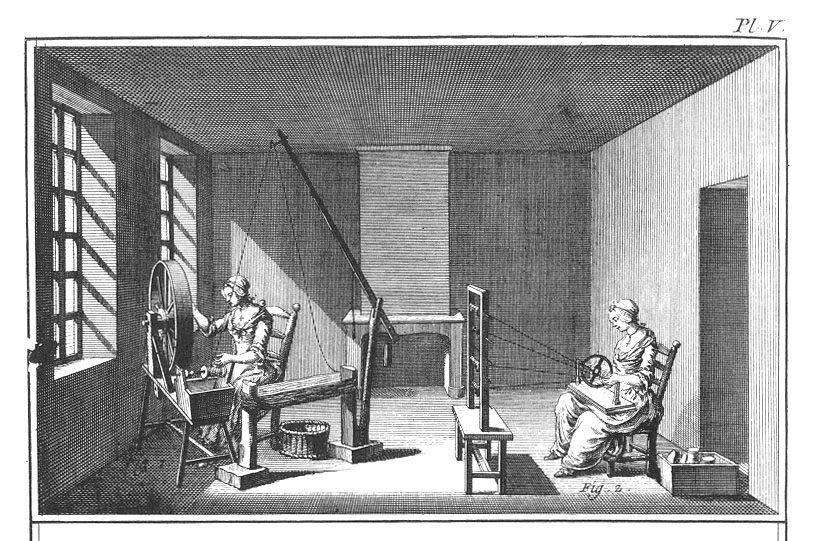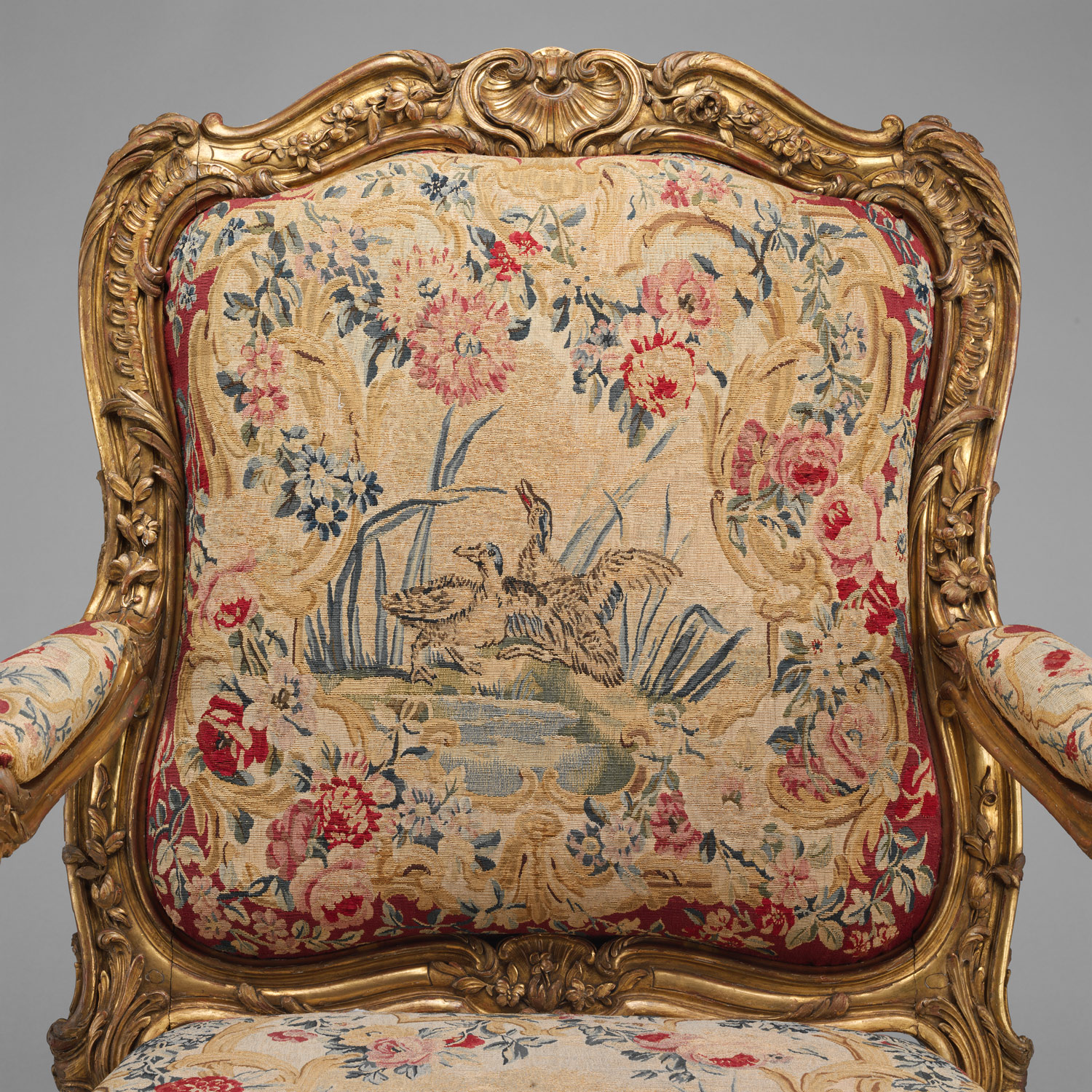
“Soierie, part1, plate 5, page 28:7:5,” from Encyclopédie, ou dictionnaire raisonné des sciences, des arts et des métiers, etc., eds. Denis Diderot and Jean le Rond D’Alembert. University of Chicago: ARTFL Encyclopédie Project (Spring 2011 Edition), Robert Morrissey (ed), http://encyclopedie.uchicago.edu/.
A piece of seating furniture was rendered visually striking primarily because of the fabric it was covered with. The fabric was particularly enhanced by the surrounding pieces inside the room, all designed with the same fabric, if not in the same color.[1]
Silk was the most commonly used covering fabric for eighteenth-century royal seating furniture. Silk- weaving was, in fact, a powerful industry in France since the fifteenth century. Lyon was the center of the silk industry, particularly because of the multitude of supporting crafts such as spinning and dyeing. In the eighteenth century, the loom technically developed in attempt to speed up weaving. A removable part called a semple could be transferred from one loom to another, so that the exact pattern could be used a second time.[2]

Detail of Armchair (fauteuil à la reine) showing upholstery and frame. Photo: Metropolitan Museum of Art, New York (66.60.2).
Silk was woven in various pattens, using lamps, silk damasks, satins, and brocades. Patterned silk valet was the most expensive and impressive of all woven textiles during the 18th century. For this reason, silk covered furniture, like the fauteuil à la reine armchair, was a symbol of nobility. As Jeffrey Munger notes, “The owner of a piece of seating furniture would often pay as much or more for the silk covering as he would for the carved and gilt frames.”[3]
The value for material quality is justified by the armchair’s durability. Silk can evidently withstand constant use and the passage of time. In the manual Principes de Part Tapissier, Jean-Francois Bimont indicates that silk was the primary covering fabric because “it has a brilliance that other materials do not have – the colors are good and in consequence, permanents…When it is strong, it has two advantages: the first is that it is better suited for use on seats, and second is that the flowers show up better.”[4]
Return to: Making the Chair Next: the Frame
[1] Munger, Jeffrey. “French Upholstery Practices of the 18th Century.” In Upholstery in America & Europe: From the Seventeenth Century to World War I. New York: W. W. Norton & Company, (1987), pp 121.
[2] Watt, Melinda. “Textile Production in Europe: Silk, 1600–1800.” In Heilbrunn Timeline of Art History. New York: The Metropolitan Museum of Art, 2000–ttp://www.metmuseum.org/toah/hd/tx t_s/hd_txt_s.htm (October 2003).
[3] Munger, Jeffrey. “French Upholstery Practices of the 18th Century.” In Upholstery in America & Europe: From the Seventeenth Century to World War I. New York: W. W. Norton & Company, (1987), pp 121.
[4] Munger, Jeffrey. “French Upholstery Practices of the 18th Century.” In Upholstery in America & Europe: From the Seventeenth Century to World War I. New York: W. W. Norton & Company, (1987), pp 122.